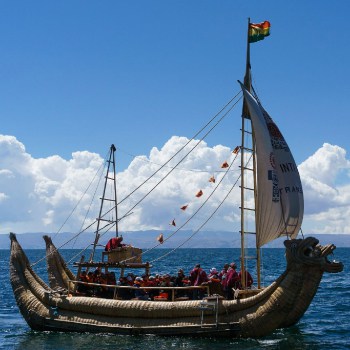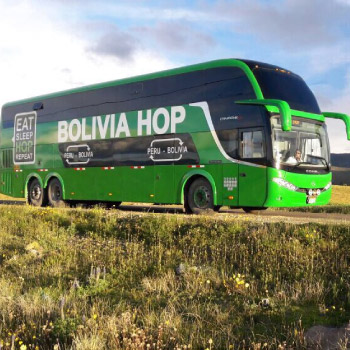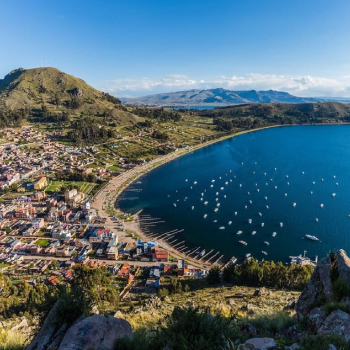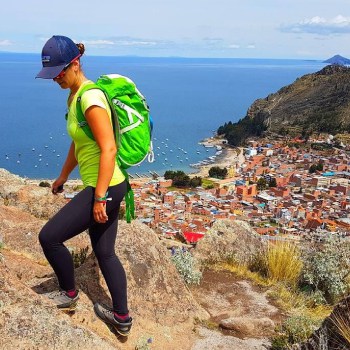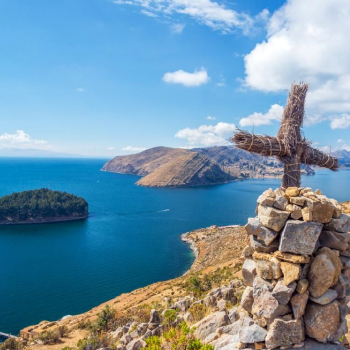Juxtaposed with the colorful lifestyle and traditions of the Aymara people, is a cosmopolitan city full of modern cafes, museums, clubs, bars and restaurants. One of the highest cities in the world, La Paz is best explored at a slow pace, taking the time to soak up the city’s rich culture and fascinating history.
With its numerous fascinating sights, free events, and cool places to go out, La Paz truly is an amazing city to visit and explore!
Getting To & From La Paz
By plane
Located in El Alto, La Paz's international airport is the highest airport in the world at 4,058 m (13,313 ft). The distance between El Alto Airport and the centre of La Paz is around 20 kilometres with an estimated travel time of around 30 minutes. Be aware that during peak hours busses fill up fast, so factor in plenty of time in order to secure a seat.The price of a taxi to and from El Alto airport is Bs 70 ($10 US). Minibuses leave every 5 minutes from Plaza Isabel de Católica and pass by Plaza San Francisco. The cost is around Bs 4 ($0.60 US per person) and busses run daily from 6.15am to 9pm.
By bus
Traveling by bus tends to be the most common way all types of travelers get into La Paz, as they either start further up north or south in South America until they make their way into La Paz. Buses are the cheaper and usually, a more comfortable option, while also getting the chance to enjoy the different sceneries throughout the trip.
For those in Peru coming from Lima or Cusco to La Paz, we strongly recommend Bolivia Hop. They are hop-on, hop-off bus service offering a flexible bus pass (50+ options from long distance to short day trips), in which you can stay however long you want in any of the destinations, letting you enjoy travel at your own pace. Apart from this, there’s onboard bilingual assistance on all their busses, as well as discounts on accommodation. But the biggest advantage of traveling with Bolivia Hop with have to be the border-crossing assistance provided by the onboard guides, who will give you the necessary paperwork and instructions, all while making sure you don't get scammed or lost throughout the process. If you want to learn more about them, click here
For those coming from any of the other bordering countries, there are many options to choose from. But as with most things in life, you get what you pay for. We recommend to fully research the companies, read reviews, blog posts and/or contact the company if necessary!
The following links provide information on how to travel between La Paz and other popular destinations in Bolivia:
GETTING AROUND LA PAZ
Transport within La Paz is safe and reliable. Traveling anywhere by taxi within the city center will cost around $0.60 per person and local buses are even cheaper again. There is also the option to take the Cable Car which is a fun way to see the city. As in any city, make sure to only take marked taxis and avoid walking by yourself at night.
Bolivian Life Quick Tip:
As voted the best way to travel around Bolivia and Peru, we highly recommend choosing Bolivia Hop as your means of transport. Their hop on hop off service gives travelers a unique experience, allowing them to see what Bolivia really has to offer!
Top Things to See and Do in La Paz
Where to Eat & Drink in La Paz
Where to Stay in La Paz
Shopping in La Paz
La Paz plays host to several bustling, colorful markets including the one-of-a-kind ‘Witches Market‘ as well as the Mercado Lanza and the Mercado Rodriguezwhere you can sample all kinds of fresh fruit, vegetables and juices.
For those looking to purchase a Bolivian musical instrument, silver jewelry, fluffy alpaca sweater or even a salteña or two, Calle Sagarnaga is a unique place to shop ’til you drop. This bustling strip, located just south of Plaza San Francisco, is lined with businesses catering primarily to tourists, featuring hostels, tour agencies, cafes, souvenir stores and clothing stalls. Due to its popularity, Calle Sagarnaga sees new shops opening on a weekly basis, offering more and more goodies for travelers to buy.
Events & Festivals in La Paz
Finding Wifi in La Paz
La Paz is wifi friendly and growing more so every day. Many cafes and hostels have WiFi, and while not boasting the fastest speeds in the word, it does the job for those looking to get some work done or even Skype home.
Further Reading
Because La Paz is largely an offline city, much of the essential information you need for planning your trip is buried in obscure blog posts and Spanish news articles. La Paz Life, is our attempt to bring to light the best the city has to offer and its many hidden gems. Through a combination of thorough research and personal experience we hope to make La Paz as accessible as possible to travelers.



